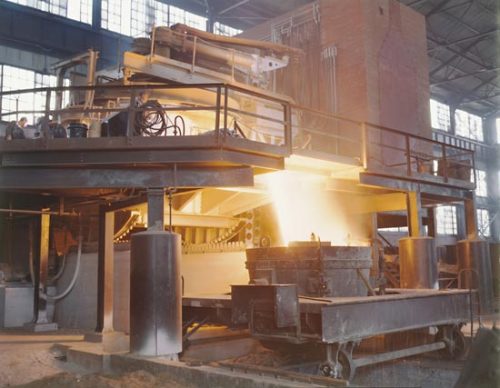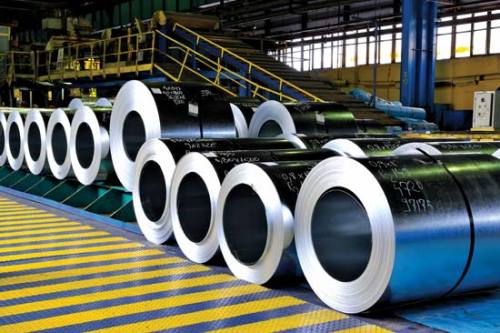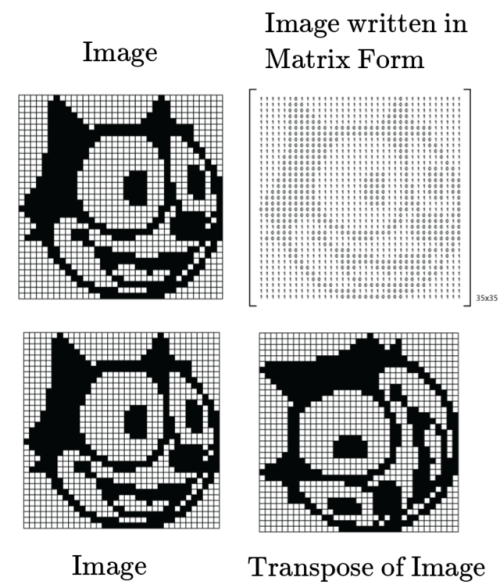The Great EsGape




The great esGape
Unlike most elemental metals, gallium will melt in the palm of your hand, or at temperatures above about 30 °C. And that’s not the only unusual thing about this element: It also expands when it freezes. In this video series, warm liquid gallium is poured into a glass vial (top), followed by a little clean-up. As the gallium cools back down to room temperature, it starts to bubble up as its volume expands (third video down). Overall, it expands 3%, shattering the vial (bottom). Water is a substance commonly used to demonstrate this sort of expansion, growing about 8% in volume when frozen, but other elements exhibit this behavior as well, including silicon and plutonium. The final two clips have been accelerated 200 times and 10 times, respectively.
Credit: Periodictable.ru (watch the whole video here; GIFs created by rudescience)
More ChemPics and C&EN stories:
Liquid metals take shape
A melting liquid
Rolling out liquid-metal motors
More Posts from T-sci-eng and Others





Google’s Wireless ‘Pixel Buds’ Headphones Can Translate 40 Languages in Real Time
That Time We Flew Past Pluto…
Two years ago today (July 14), our New Horizons spacecraft made its closest flyby of Pluto…collecting images and science that revealed a geologically complex world. Data from this mission are helping us understand worlds at the edge of our solar system.

The spacecraft is now venturing deeper into the distant, mysterious Kuiper Belt…a relic of solar system formation…to reach its next target. On New Year’s Day 2019, New Horizons will zoom past a Kuiper Belt object known as 2014 MU69.

The Kuiper Belt is a disc-shaped region of icy bodies – including dwarf planets such as Pluto – and comets beyond the orbit of Neptune. It extends from about 30 to 55 Astronomical Units (an AU is the distance from the sun to Earth) and is probably populated with hundreds of thousands of icy bodies larger than 62 miles across, and an estimated trillion or more comets.

Nearly a billion miles beyond Pluto, you may be asking how the spacecraft will function for the 2014 MU69 flyby. Well, New Horizons was originally designed to fly far beyond the Pluto system and explore deeper into the Kuiper Belt.

The spacecraft carries extra hydrazine fuel for the flyby; its communications system is designed to work from beyond Pluto; its power system is designed to operate for many more years; and its scientific instruments were designed to operate in light levels much lower than it will experience during the 2014 MU69 flyby.
What have we learned about Pluto since its historic flyby in 2015?
During its encounter, the New Horizons spacecraft collected more than 1,200 images of Pluto and tens of gigabits of data. The intensive downlinking of information took about a year to return to Earth! Here are a few things we’ve discovered:
Pluto Has a Heart

This image captured by New Horizons around 16 hours before its closest approach shows Pluto’s “heart.” This stunning image of one of its most dominant features shows us that the heart’s diameter is about the same distance as from Denver to Chicago. This image also showed us that Pluto is a complex world with incredible geological diversity.
Icy Plains

Pluto’s vast icy plain, informally called Sputnik Planitia, resembles frozen mud cracks on Earth. It has a broken surface of irregularly-shaped segments, bordered by what appear to be shallow troughs.
Majestic Mountains

Images from the spacecraft display chaotically jumbled mountains that only add to the complexity of Pluto’s geography. The rugged, icy mountains are as tall as 11,000 feet high.
Color Variations

This high-resolution enhanced color view of Pluto combines blue, red and infrared images taken by the New Horizons spacecraft. The surface of tPluto has a remarkable range of subtle color variations. Many landforms have their own distinct colors, telling a complex geological and climatological story.
Foggy Haze and Blue Atmosphere

Images returned from the New Horizons spacecraft have also revealed that Pluto’s global atmospheric haze has many more layers than scientists realized. The haze even creates a twilight effect that softly illuminates nightside terrain near sunset, which makes them visible to the cameras aboard the spacecraft.
Water Ice

New Horizons detected numerous small, exposed regions of water ice on Pluto. Scientists are eager to understand why water appears exactly where it does, and not in other places.
Stay updated on New Horizons findings by visiting the New Horizons page. You can also keep track of Pluto News on Twitter via @NASANewHorizons.
Make sure to follow us on Tumblr for your regular dose of space: http://nasa.tumblr.com
These giant mesh nets provide drinking water in the driest desert on Earth.

Behold the awesomeness that is the heart of a blue whale. This colossal organ weighs 440 pounds and was retrieved from the carcass of a whale that had washed up on the shore of Newfoundland in 2014. Despite decomposition the heart was still in such great condition that it was a perfect candidate for preservation via plastination, which is precisely what was done by mammalogy technicians at the Royal Ontario Museum in Toronto.
Head over to Wired to learn how museum scientists went about preserving this titanic ticker.
[via Wired]
5 things you didn’t know about... Concorde

Credit: British Airways
1. Operated by British Airways and Air France, Concorde went into operation in 1976, following 5,000 hours of flight testing. Seating 100 passengers, it catered to the privileged or business traveller. Concorde was withdrawn from service in 2003, after 27 years.
2. The most popular route for the British carrier was from London Heathrow to New York JFK in just three hours and 20 minutes. Cruising at Mach 2.02, passengers experienced heights of 60,000ft, a vantage point from which they could see the curvature of the Earth below and dark skies above at midday.
3. The four Olympus 593 engines that powered Concorde were twin spool turbojets.
4. The materials used for Concorde’s structure needed to withstand temperature extremes – subsonic speeds, the aircraft fuselage would experience lows of -35°C, but at Mach 2 the temperature reached 127°C at the nose.
5. Concorde’s long, pointed nose cone played a key role in landing. Formed of resin-bonded glass fibre, as metals would interfere with the signals detecting storm clouds, the hydraulically powered nose cone could be moved independently to an angle of 12.5° on landing, allowing the pilot to see the approaching runway.
To find out more see page 60 of the June issue of Materials World or visit http://bit.ly/2qDPjJC.





Alloys: Steel
According to Dictionary.com, steel is “any of various modified forms of iron, artificially produced, having a carbon content less than that of pig iron and more than that of wrought iron, and having qualities of hardness, elasticity, and strength varying according to composition and heat treatment: generally categorized as having a high, medium, or low-carbon content”.
Perhaps the most well known alloy around, as well as one of the most common materials in the world, steel is essentially iron with a small percentage of carbon (and, on occasion, one or more other elements). Not enough carbon and you’re stuck with wrought iron, too much carbon and you get cast iron. The graph above is a binary iron-carbon phase diagram that goes from zero percent carbon to about 6.5 percent, illustrating the various phases that can form.
Steel has been known about since ancient times, some pieces dating back to 1800 BC, but it was the invention of the Bessemer process during the industrial revolution that really popularized the alloy. (Technically, similar methods had been used before, particularly in China and Japan, but Henry Bessemer invented the modern method, industrializing it and obtaining a patent in 1856.)
Mainly used in construction, the alloy has been used for almost every possible application: from office furniture to steel wool, from bulldozers to washing machines, and from wires to watches, the possibilities are pretty much endless. Steel is also one of the world’s most-recycled materials, able to be used more than once, with a recycling rate of over 60% globally.
The addition of carbon allows the steel to be stronger than the iron it’s made from. Adding nickel and manganese increases its tensile strength, chromium increases hardness and melting temperature, and vanadium also increases hardness while making it less prone to metal fatigue. Stainless steel has at least eleven percent chromium, whereas Hadfield steel (which resists wearing) contains twelve to fourteen percent manganese. Check out these links for more information on the effects of adding certain elements.
Sources: 1 (top images), 2 (bottom images)





In mathematics there is a concept known as ‘Conformal Mapping’ which allows you convert a given shape to a completely different one by making a transformation.
In the joukowski transform you take all the points on a circle and apply the following transform:

And the resulting transformed points resemble an aerofoil shape. Pretty cool huh ?
** Conformal mappings are a really cool topic in complex analysis but also equally extensive. If you want to know more about them click here

How did the Greeks know ?
Greeks had a strong geometric approach towards problems and as a result their methods are very intuitive.
In this post, we will look at the Method of exhaustion formulated by Archimedes that stands out as a milestone in the history of mathematics
Method of Exhaustion - Archimedes

Source
In order to find the bounds of pi, Archimedes came up with a remarkably elegant ‘algorithm’, which is as follows:
Lower bound
Inscribe a n-sided polygon in a circle —> Measure its perimeter(p) —> Measure its diameter(d) —> pi_min = p/d —-> Repeat with n+1 sides.
Upper bound
Circumscribe a n-sided polygon in a circle —> Measure its perimeter(p) —> Measure its diameter(d) —> pi_max = p/d —-> Repeat with n+1 sides.
And by following this procedure one could obtain the upper and lower bounds of pi !
Heres an animation made on geogebra for a circle of diameter 1. Watch how the lower and upper bounds vary.

Archimedes did this for a 96 sided polygon and found the value of pi to be between 3.14103 and 3.1427. This is a good enough approximation for most of the calculations that we do even today!

Happy Holidays !



On the transpose of a matrix
In this post, I would just like to highlight the fact an image can be represented in a matrix form and matrix transformations such as transpose, shearing, scaling, etc, from an image processing point of view are purely physical !
Check out this article from the klein project if this post interested you.
Have a great day!
* Interactive Felix the cat and matrix
-
 bitsofsciencelife reblogged this · 1 month ago
bitsofsciencelife reblogged this · 1 month ago -
 yourheadtripisboringme liked this · 6 years ago
yourheadtripisboringme liked this · 6 years ago -
 crayzette reblogged this · 6 years ago
crayzette reblogged this · 6 years ago -
 crayzette liked this · 6 years ago
crayzette liked this · 6 years ago -
 hungup-unfinished liked this · 6 years ago
hungup-unfinished liked this · 6 years ago -
 cervicalwelding liked this · 6 years ago
cervicalwelding liked this · 6 years ago -
 new-outset liked this · 6 years ago
new-outset liked this · 6 years ago -
 gucci-depressione liked this · 6 years ago
gucci-depressione liked this · 6 years ago -
 combatmedicmrcy liked this · 6 years ago
combatmedicmrcy liked this · 6 years ago -
 roseearlgrey-tea liked this · 6 years ago
roseearlgrey-tea liked this · 6 years ago -
 actirasty liked this · 6 years ago
actirasty liked this · 6 years ago -
 kingdommyhearts liked this · 6 years ago
kingdommyhearts liked this · 6 years ago -
 ablaske reblogged this · 6 years ago
ablaske reblogged this · 6 years ago -
 crystalrainbowwarrior liked this · 6 years ago
crystalrainbowwarrior liked this · 6 years ago -
 penisvvrinkle reblogged this · 6 years ago
penisvvrinkle reblogged this · 6 years ago -
 shadowwolfe-13 liked this · 6 years ago
shadowwolfe-13 liked this · 6 years ago -
 xytoskeleton reblogged this · 6 years ago
xytoskeleton reblogged this · 6 years ago -
 thelittlenessie liked this · 6 years ago
thelittlenessie liked this · 6 years ago -
 vaisaur reblogged this · 6 years ago
vaisaur reblogged this · 6 years ago -
 vaisaur liked this · 6 years ago
vaisaur liked this · 6 years ago -
 carydorse reblogged this · 6 years ago
carydorse reblogged this · 6 years ago -
 carydorse liked this · 6 years ago
carydorse liked this · 6 years ago -
 megxolotl liked this · 6 years ago
megxolotl liked this · 6 years ago -
 inner8andtheisms reblogged this · 6 years ago
inner8andtheisms reblogged this · 6 years ago -
 ghouls-ghouls-boos liked this · 6 years ago
ghouls-ghouls-boos liked this · 6 years ago -
 faeline liked this · 6 years ago
faeline liked this · 6 years ago -
 paleasamoon reblogged this · 6 years ago
paleasamoon reblogged this · 6 years ago -
 paleasamoon liked this · 6 years ago
paleasamoon liked this · 6 years ago -
 sexcuriosi liked this · 7 years ago
sexcuriosi liked this · 7 years ago -
 xytoskeleton reblogged this · 7 years ago
xytoskeleton reblogged this · 7 years ago -
 sherockschaos-blog liked this · 7 years ago
sherockschaos-blog liked this · 7 years ago -
 emperor-olsen reblogged this · 7 years ago
emperor-olsen reblogged this · 7 years ago -
 wearetherussiantwins liked this · 7 years ago
wearetherussiantwins liked this · 7 years ago -
 diann2121 liked this · 7 years ago
diann2121 liked this · 7 years ago -
 shadylex reblogged this · 7 years ago
shadylex reblogged this · 7 years ago -
 t-sci-eng reblogged this · 7 years ago
t-sci-eng reblogged this · 7 years ago -
 starlitservos liked this · 8 years ago
starlitservos liked this · 8 years ago -
 calelian reblogged this · 8 years ago
calelian reblogged this · 8 years ago -
 calelian liked this · 8 years ago
calelian liked this · 8 years ago -
 yescat liked this · 8 years ago
yescat liked this · 8 years ago -
 regressionstims reblogged this · 8 years ago
regressionstims reblogged this · 8 years ago -
 memoryalice-blog liked this · 8 years ago
memoryalice-blog liked this · 8 years ago -
 spookygator liked this · 8 years ago
spookygator liked this · 8 years ago -
 nettlefeather reblogged this · 8 years ago
nettlefeather reblogged this · 8 years ago